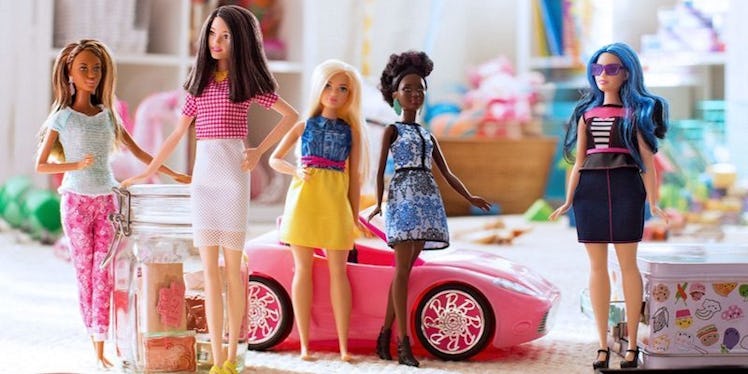
Why The New 'Curvy' Barbie Is Sending The Wrong Body Image Message
I spent my childhood playing with Barbies. I collected each one, making Skipper, Teresa, Christie and Midge part of my squad.
Sorry, Balmain, but I had an army way before you did.
Barbie’s one drawback, however, was that she never looked anything like me. She never had brown hair, realistic-looking freckles and, most importantly, was never “curvy." Instead, Barbie came in a one-size-fits-all package. She had a perfect hip-to-waist ratio, straight blonde hair and a megawatt smile.
Today, Mattel, Barbie’s parent company, announced the release of three new doll shapes. A petite girl, a tall girl and a curvy girl will all take their place alongside every kid's favorite playmate.
In a promotional video for the new sizes, a little girl explains that "it's important for Barbies to look different. You know, like the real people in the world."
Obviously, this is great news. It’s a step in the right direction for body acceptance for girls of all shapes and sizes. As a little girl, it would've been wonderful to have a girl who more accurately represented what I thought future "me" would look like.
A slimmer, modelesque tall mold and a perfectly compact petite are certainly a welcome change in the doll community. No more will Barbie exclusively be the stereotypical blonde cheerleader we all loved to hate in high school.
Don't get me wrong, that girl is still there, but now she has taller, shorter and curvier friends.
It's also the "curvy" doll I have an issue with.
When the media talks about curvy women — and boy, do I hate that word — the general public has a pretty clear idea of what that entails. This woman, usually portrayed by a Kim Kardashian-lookalike, has large breasts, wide hips and a flat-ish stomach. She still has that ultra-desirable hourglass mold, just in a size 12, not 2.
There's absolutely nothing wrong with that shape, of course, but it's only one shape. It doesn't cover plus-size across the board. Yet, this is the only body type we keep seeing in plus-size media.
Don’t get me wrong, the fashion and beauty industry has made strides in opening up the floor when it comes to discussing plus-size figures.
Brands like Aerie and H&M have finally begun to feature women who don't look Karlie Kloss. Designers have begun to embrace working with plus-size models. Remember Myla Dalbesio’s shoot for Calvin Klein underwear? She turned the industry on it’s damn head, and she sure as sh*t didn’t have to have a body like Gigi Hadid.
We're still embracing only the kind of curvy that comes in an hourglass mold. Really, we’re not changing our way of thinking at all. We’re just adding a couple of inches around its waist.
This phenomenon isn’t just Barbie-specific. Just as supermodels are criticized for going to extreme lengths to appear thin, plus-size models are constantly battling fluctuating weight gain. In order to appear more "plus," many models use custom pads that add a size or two, usually around the hips or breasts.
Worse yet, what of the little girls who are given the curvy Barbie, while their friends get the tall or original mold?
Take my four-year-old sister, for example. If she was gifted a curvy Barbie for her birthday, I'd be livid. What is that supposed to mean? She needs a special doll because her figure deviates from the so-called norm?
These new Barbies are forcing us to comment on children's body weight. While this could promote a healthy, active lifestyle, it is also forcing us to start grouping children together by stature and shape.
Let me be honest. I’m happy Mattel and Barbie have broached the body image discussion. But as a curvy girl, I’m not convinced this was the right way to go about it.